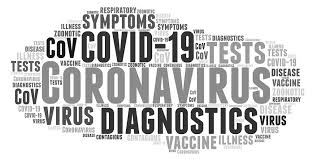Abstract
Severe acute respiratory syndrome coronavirus 2 (SARS-CoV-2) infection is not always confined to the respiratory system, as it impacts people on a broad clinical spectrum from asymptomatic to severe systemic manifestations resulting in death. Further, accumulation of intra-host single nucleotide variants during prolonged SARS-CoV-2 infection may lead to emergence of variants of concern (VOCs). Still, information on virus infectivity and intra-host evolution across organs is sparse. We report a detailed virological analysis of thirteen postmortem coronavirus disease 2019 (COVID-19) cases that provides proof of viremia and presence of replication-competent SARS-CoV-2 in extrapulmonary organs of immunocompromised patients, including heart, kidney, liver, and spleen (NCT04366882). In parallel, we identify organ-specific SARS-CoV-2 genome diversity and mutations of concern N501Y, T1027I, and Y453F, while the patient had died long before reported emergence of VOCs. These mutations appear in multiple organs and replicate in Vero E6 cells, highlighting their infectivity. Finally, we show two stages of fatal disease evolution based on disease duration and viral loads in lungs and plasma. Our results provide insights about the pathogenesis and intra-host evolution of SARS-CoV-2 and show that COVID-19 treatment and hygiene measures need to be tailored to specific needs of immunocompromised patients, even when respiratory symptoms cease.
Introduction
The coronavirus disease 2019 (COVID-19) pandemic, caused by severe acute respiratory syndrome coronavirus 2 (SARS-CoV-2), has now gripped the world for over a year and a half. The viral zoonotic origin, airborne transmission capacity, and genome plasticity have favored a fast and global human-to-human transmission of SARS-CoV-2 resulting in waves of epidemics1,2,3. People infected with SARS-CoV-2 may experience various symptoms ranging from mild respiratory illness and loss of smell and taste to severe respiratory and systemic manifestations resulting in death4. Besides, extensive and/or prolonged SARS-CoV-2 replication in the airways of immunocompromised individuals accelerates viral intra-host evolution leading to the emergence and spread of new virus variants with higher transmission capacities (i.e., variants of concern [VOCs])5,6,7,8,9.
Although the airways and lungs are considered as the “viral ground zero”, SARS-CoV-2 is not always confined to the respiratory tract. Indeed, autopsy series have revealed several pathways to death in COVID-19 patients, including multi-organ failure. Besides, multiple studies have found traces of SARS-CoV-2 (i.e., viral RNA and proteins or virus-like particles) in various organs besides the lungs10. Still, current knowledge on complex virological parameters or intra-host evolution is limited to the respiratory system, while detailed information on viral presence in extrapulmonary compartments is missing10,11,12.
Therefore, we have performed a detailed virological analysis of minimal invasive autopsy material from 13 COVID-19 patients collected at the Jessa Hospital in Hasselt, Belgium. Our results demonstrate viremia and dissemination of infectious SARS-CoV-2 to multiple extrapulmonary organs including the heart, kidney, liver, and spleen. Further, the study shows organ-specific SARS-CoV-2 genome diversity in an immunocompromised patient with long-term COVID-19. Moreover, we identify SARS-CoV-2 variants that have evolved hallmark mutations of current Alpha, Beta, and Gamma VOCs in multiple organs, while the patient had died long before the reported emergence of these variants.
Results
The lungs and selected extrapulmonary organs (heart, kidney, liver, and spleen) of 13 deceased COVID-19 patients were biopsied postmortem under computed tomography (CT) guidance at the Jessa Hospital, Hasselt, Belgium during the period of April 15–June 30 2020. Additionally, plasma was collected from aortic blood and fractionated by ultracentrifugation. The mean age of this cohort was 77 (range 64–85) with five females and eight males. Patient clinical information are summarized in Table S1.
Viral loads in the lungs and RNAemia are higher when patients succumb rapidly to infection
Viral RNA was detected in the lungs and plasma of 9/13 patients (Table S1 and Fig. 1a). Cases were then stratified based on the duration of the disease (short <20 days; long >20 days). Patients who succumbed within 20 days following onset of symptoms generally had a higher viral RNA load in the lungs and plasma when compared to those that had lived longer (P = 0.002; F = 12.589; df = 23; Fig. 1a and Fig. S1). Our results support two phases of fatal disease evolution, including (i) short-lived disease with high viral loads in lungs and plasma, associated with a histological pattern of acute exudative alveolar damage in the lungs and (ii) long-lived disease with low (or undetectable) viral loads in lungs and plasma, associated with a chronic pattern of lung injury (Fig. 1a, b and Fig. S2). These results agree with the findings of another autopsy study12. Similarly, intra- and extracellular presence of SARS-CoV-2 nucleocapsid protein (NP) was more frequently identified in the lungs of cases with short-lived disease (four out of five), compared to those with long-lived disease (one out of eight). Overall, bronchiolar epithelial cells and alveolar epithelial cells were the dominant cell type expressing SARS-CoV-2 NP, but we also identified viral NP in alveolar macrophages (Fig. 1b and Fig. S3), as described by others10,12,13. Patient 13, who was under rituximab treatment for B cell lymphoma at the time of infection, did not follow the trend and had an exceptionally high viral RNA load in the lungs (106.5 copies/40 ng RNA) and plasma (106.2 copies/mL) after 88 days of disease. SARS-CoV-2 NP was ubiquitously and abundantly found intracellularly and extracellularly in hyaline membranes in the latter patient’s lungs, which showed a “remodeling pattern” with interstitial fibrosis and consolidation of airspace (Fig. 1b and Fig. S3)….







